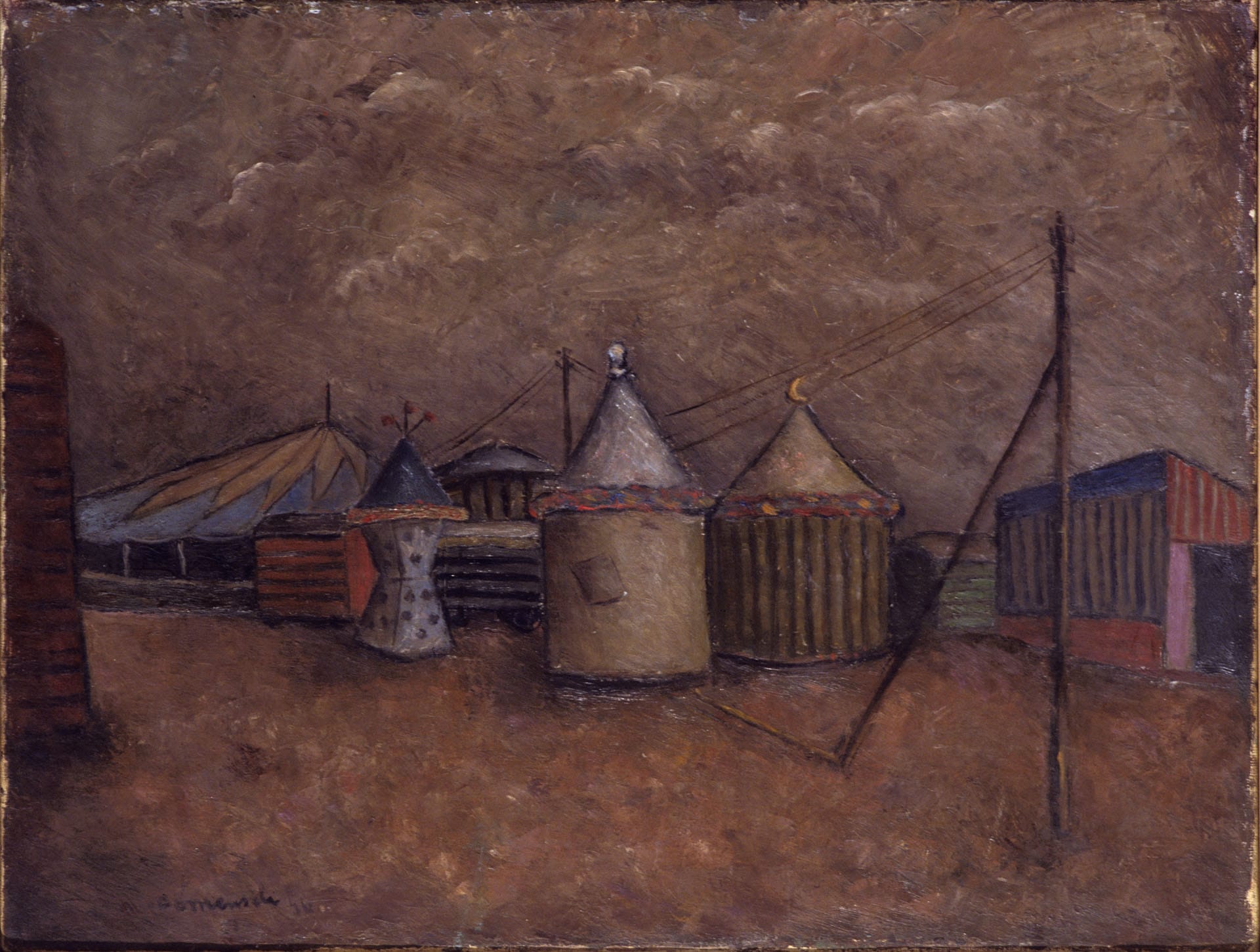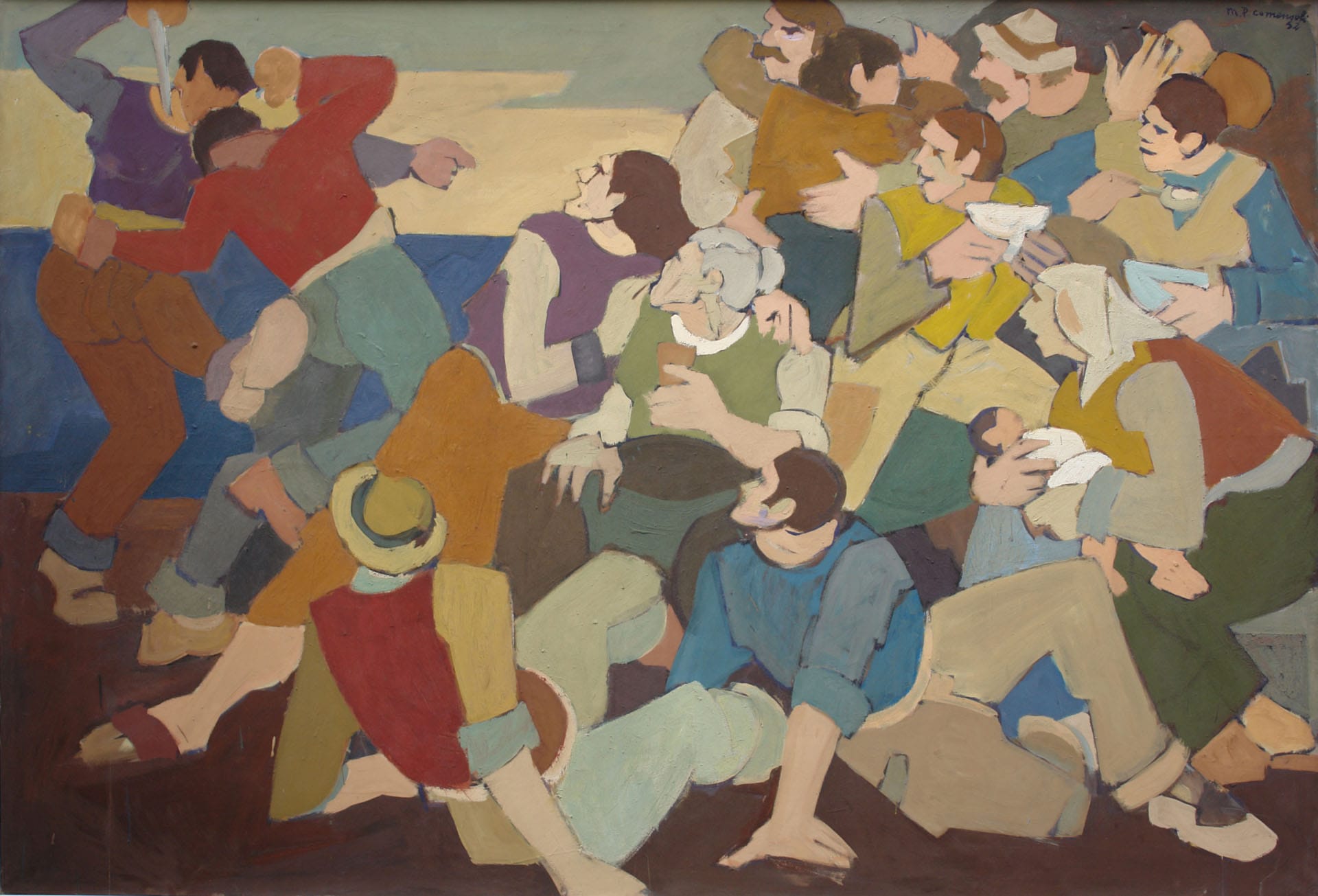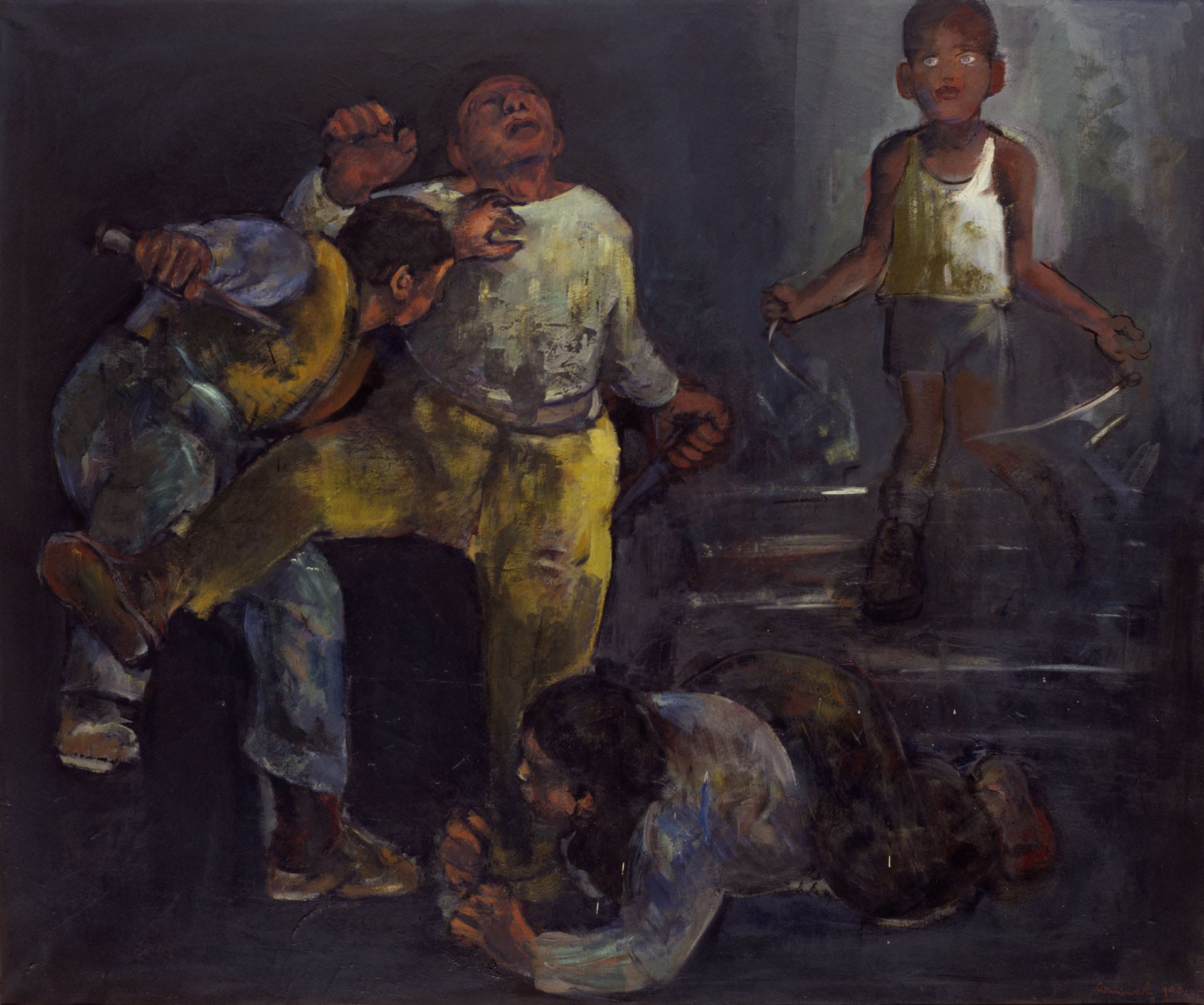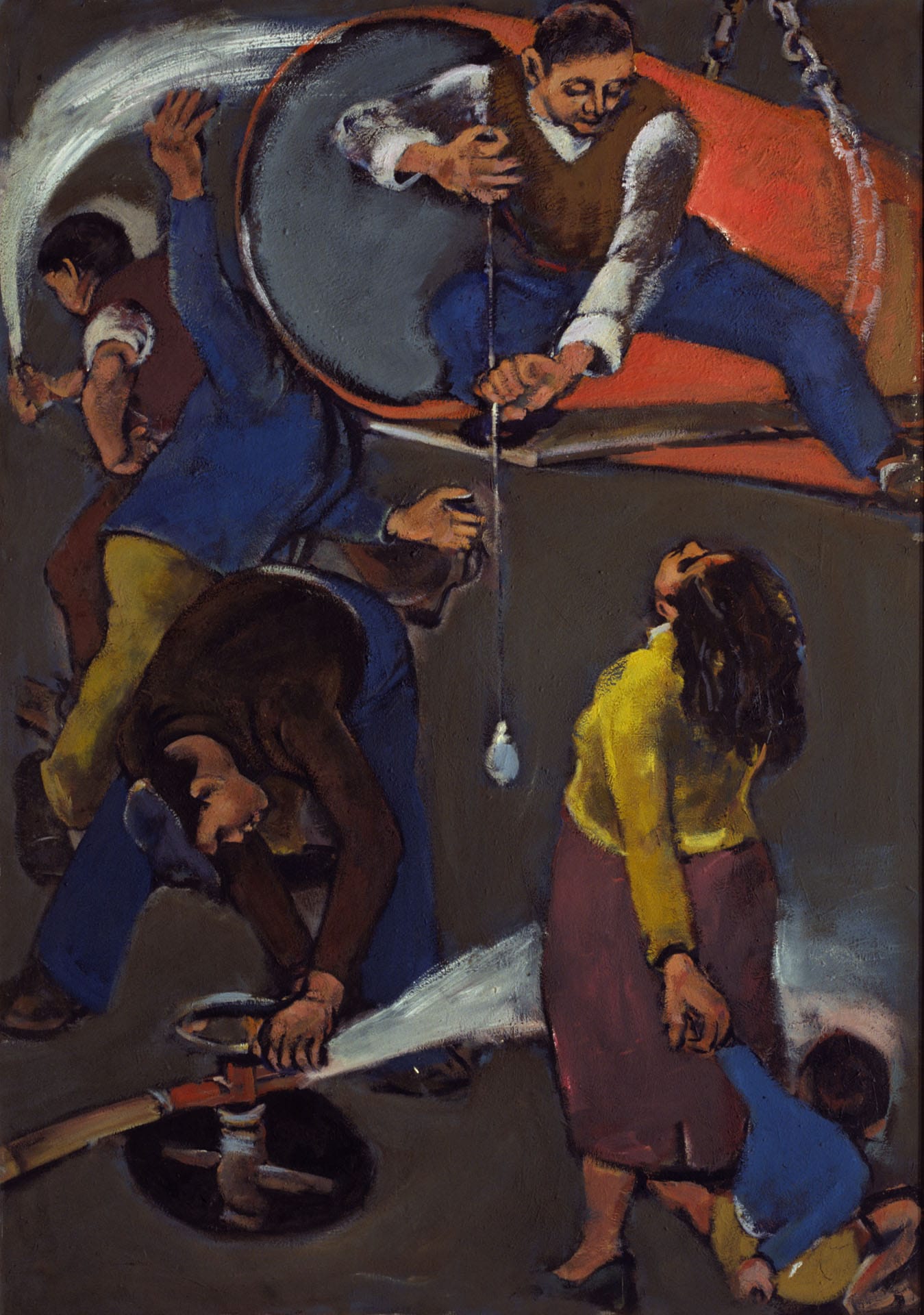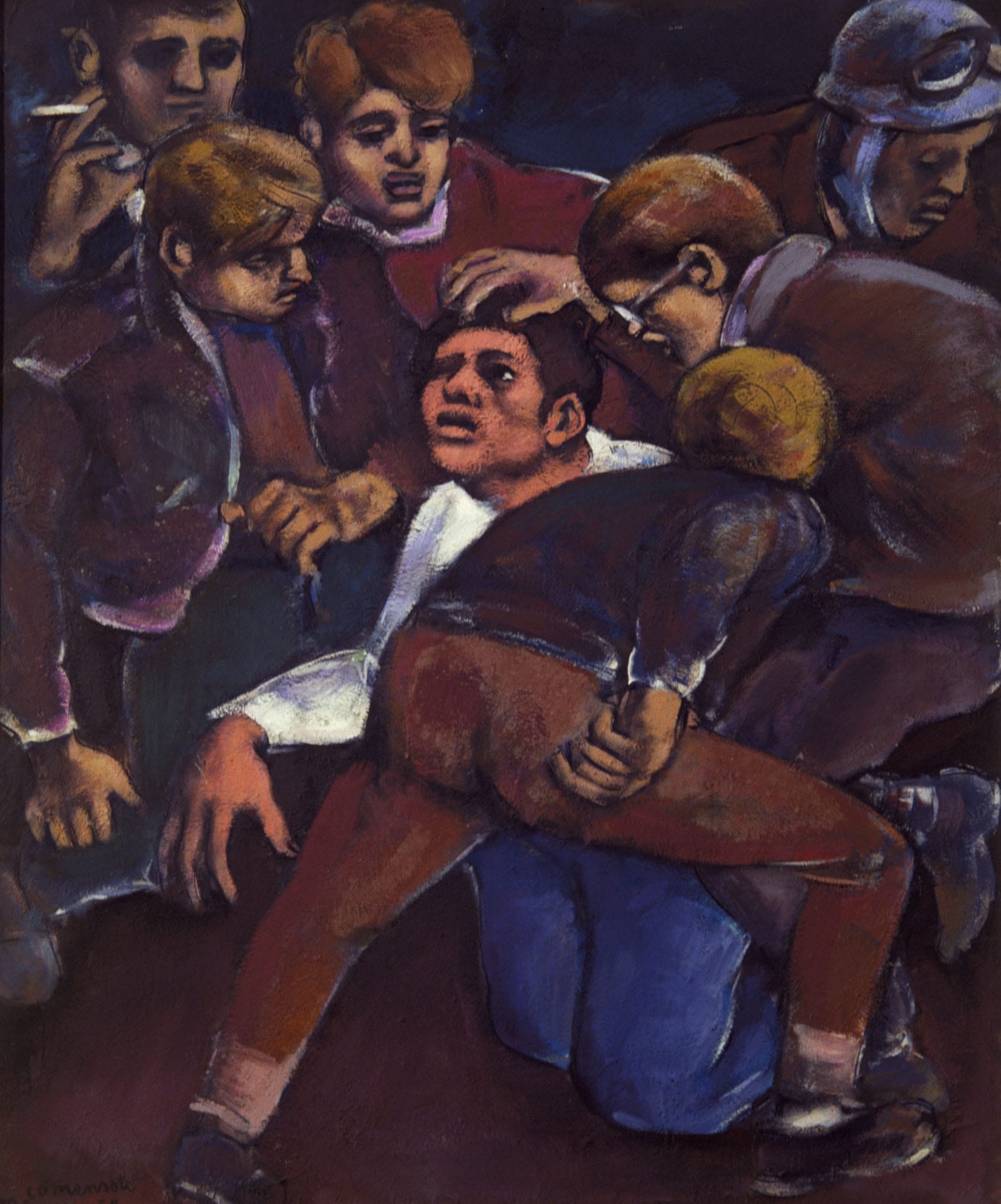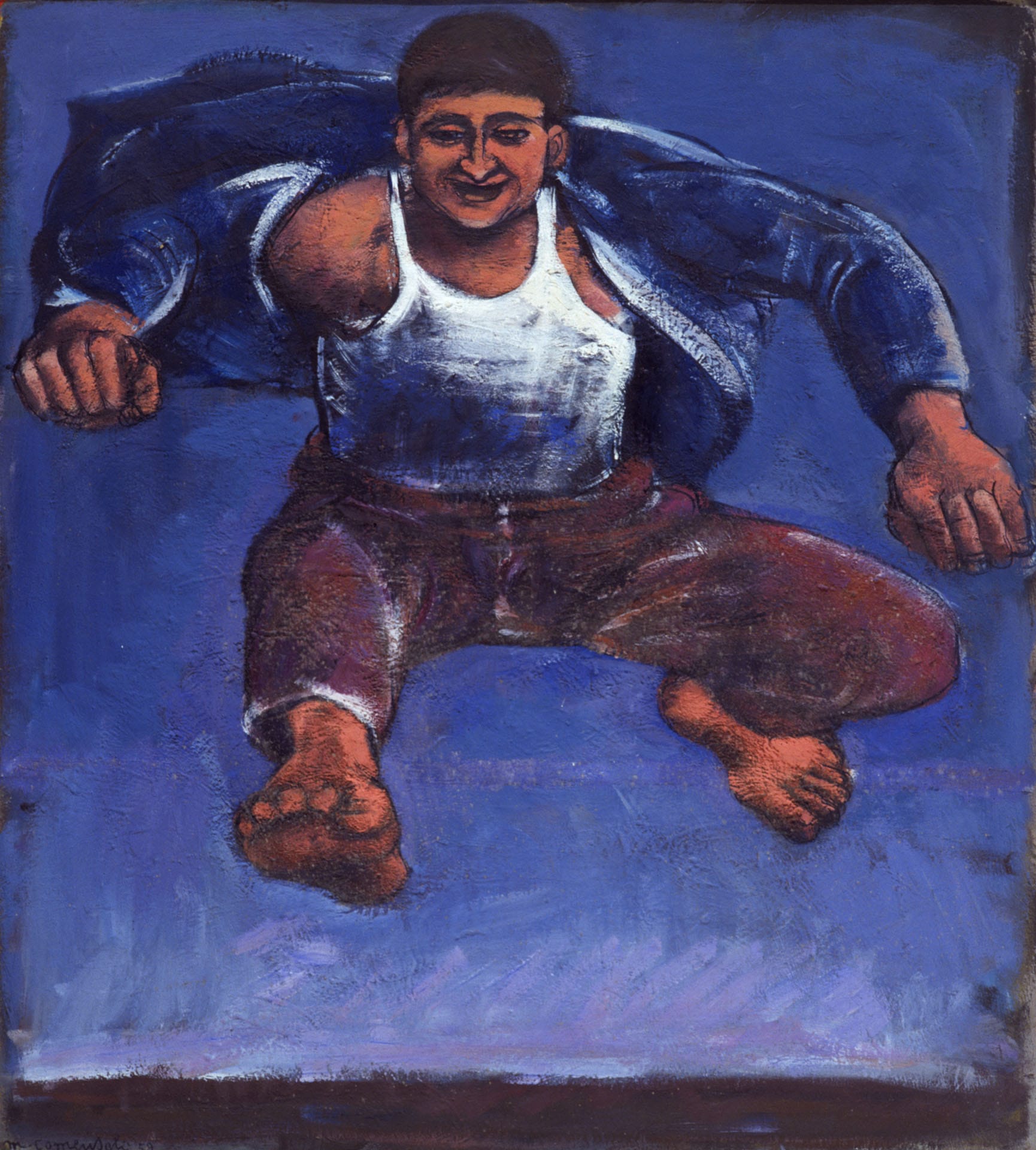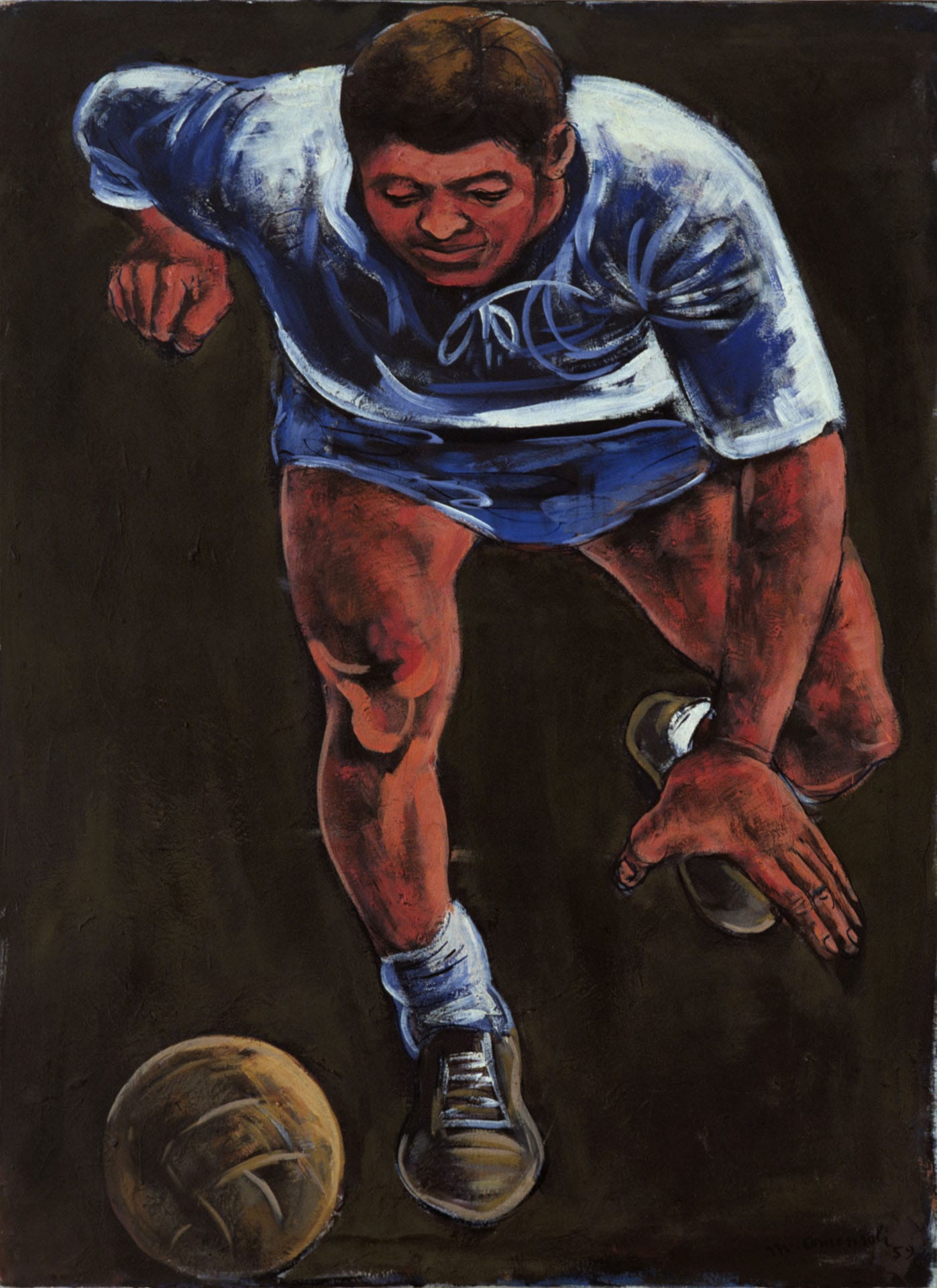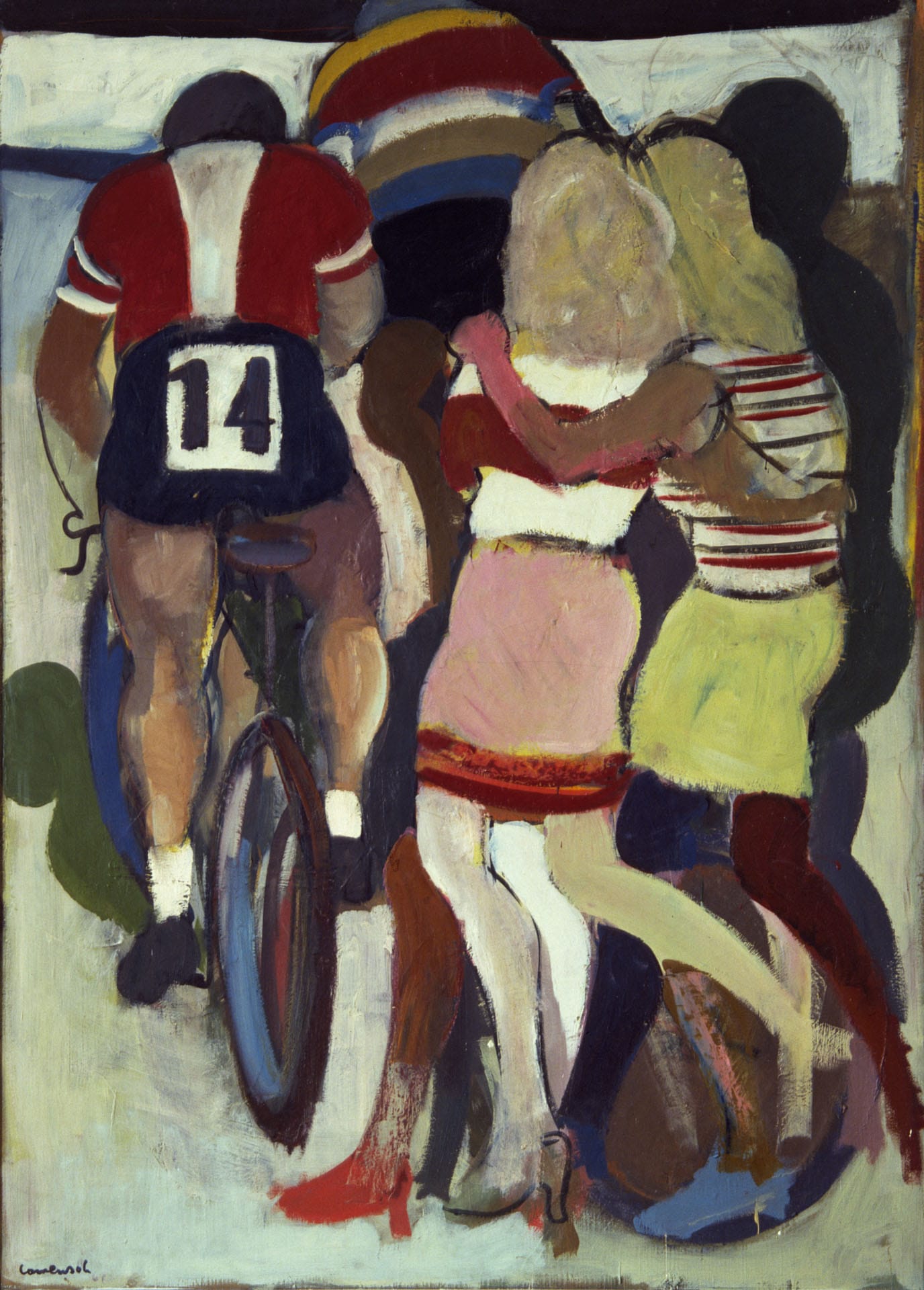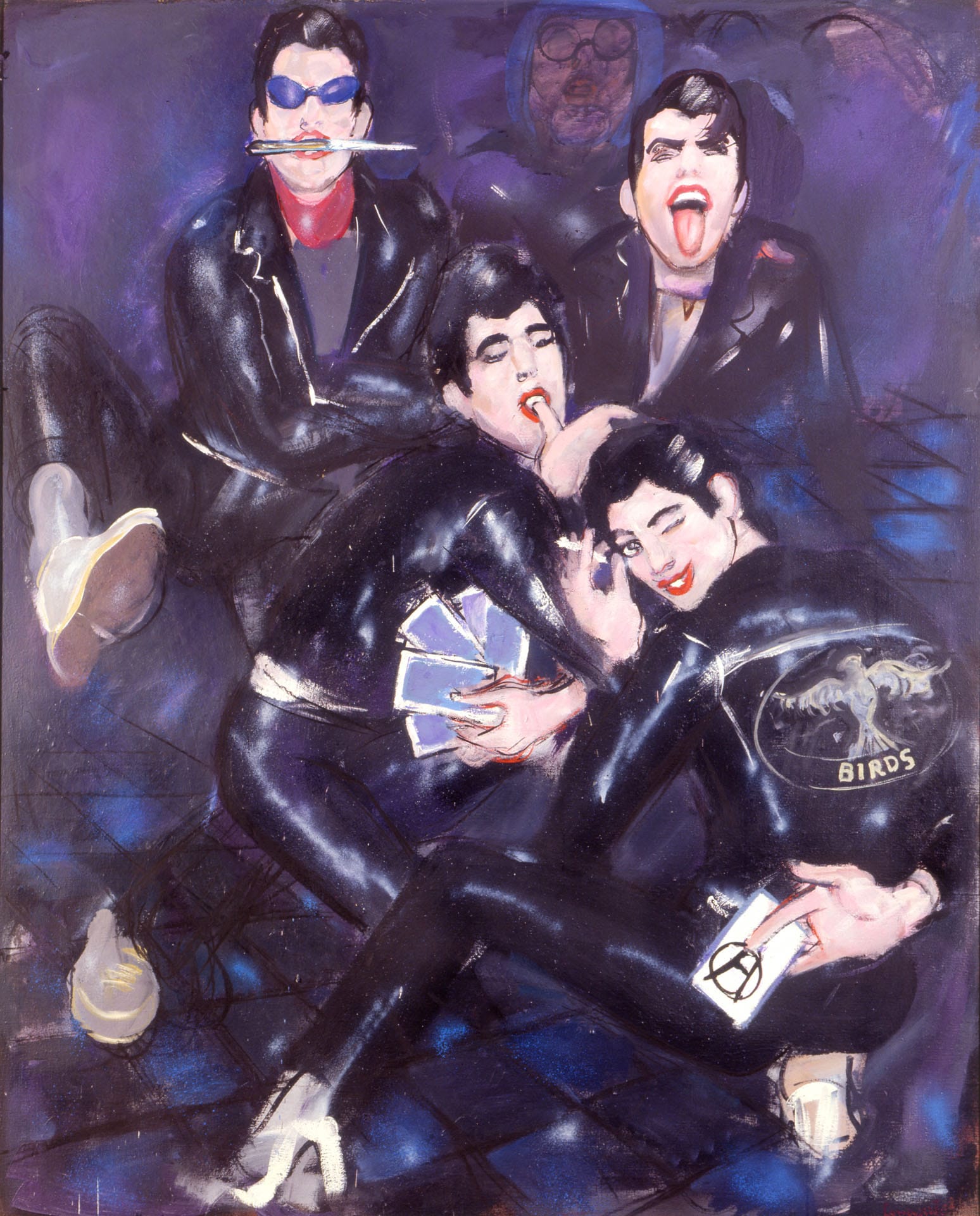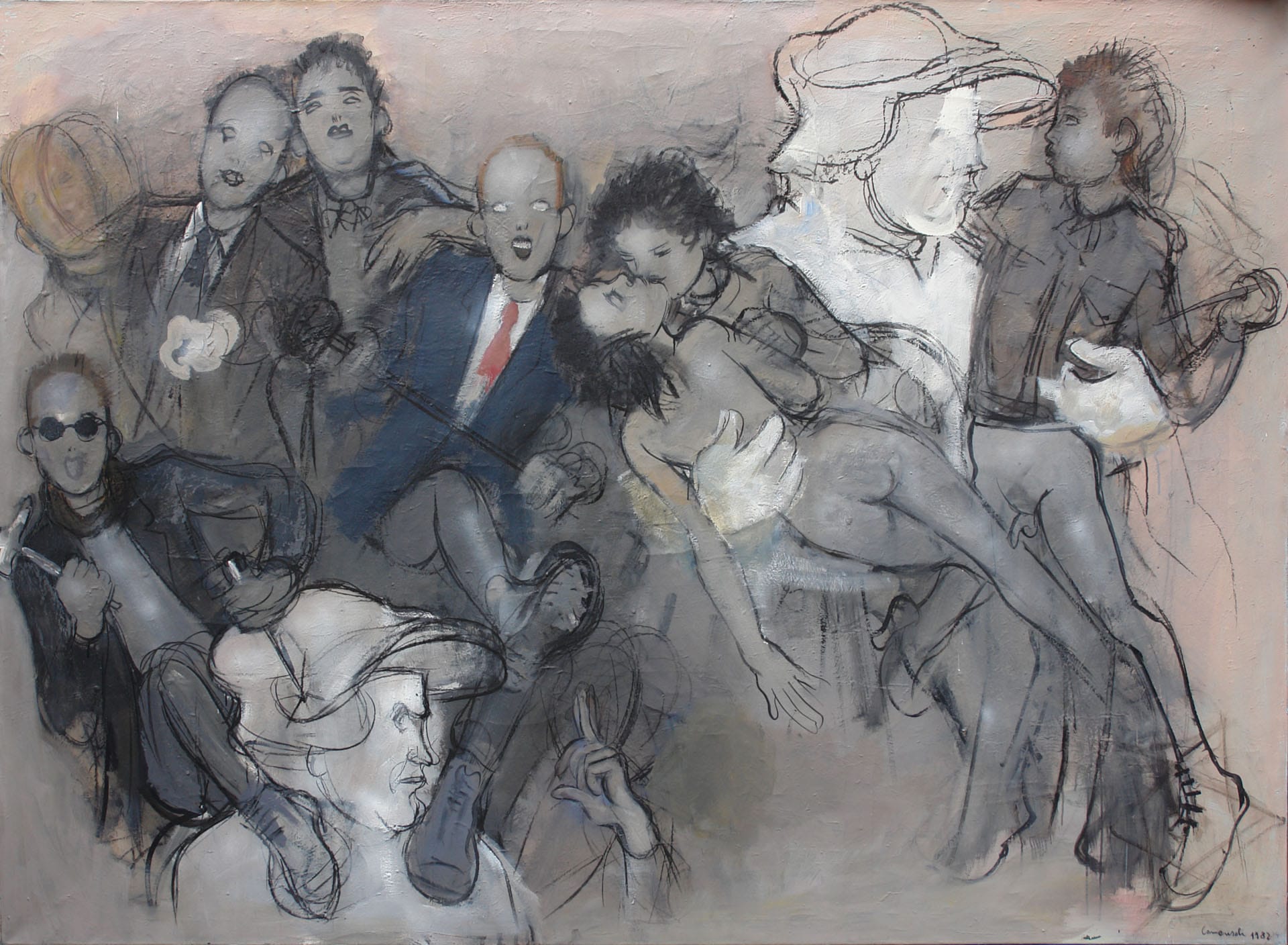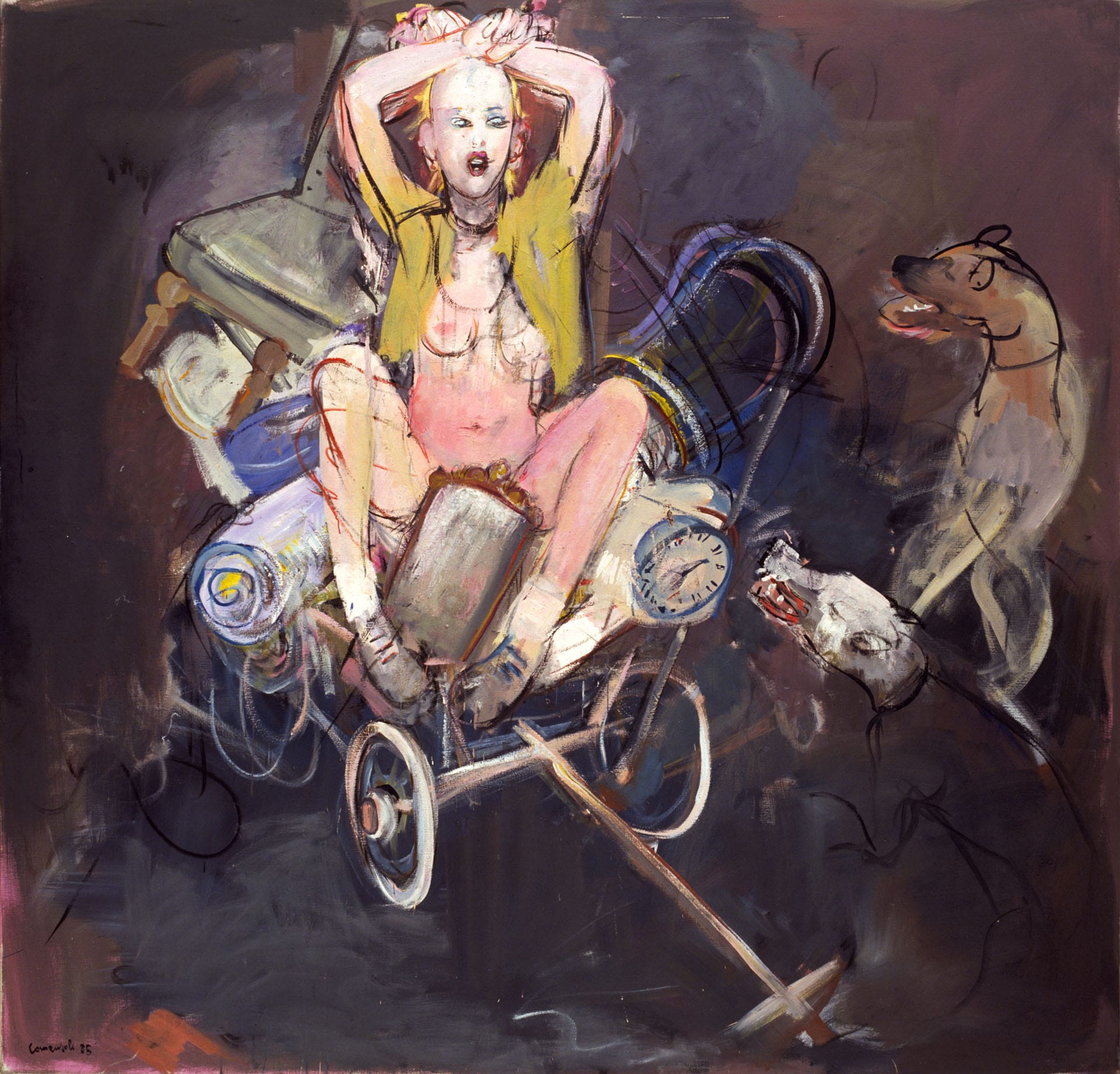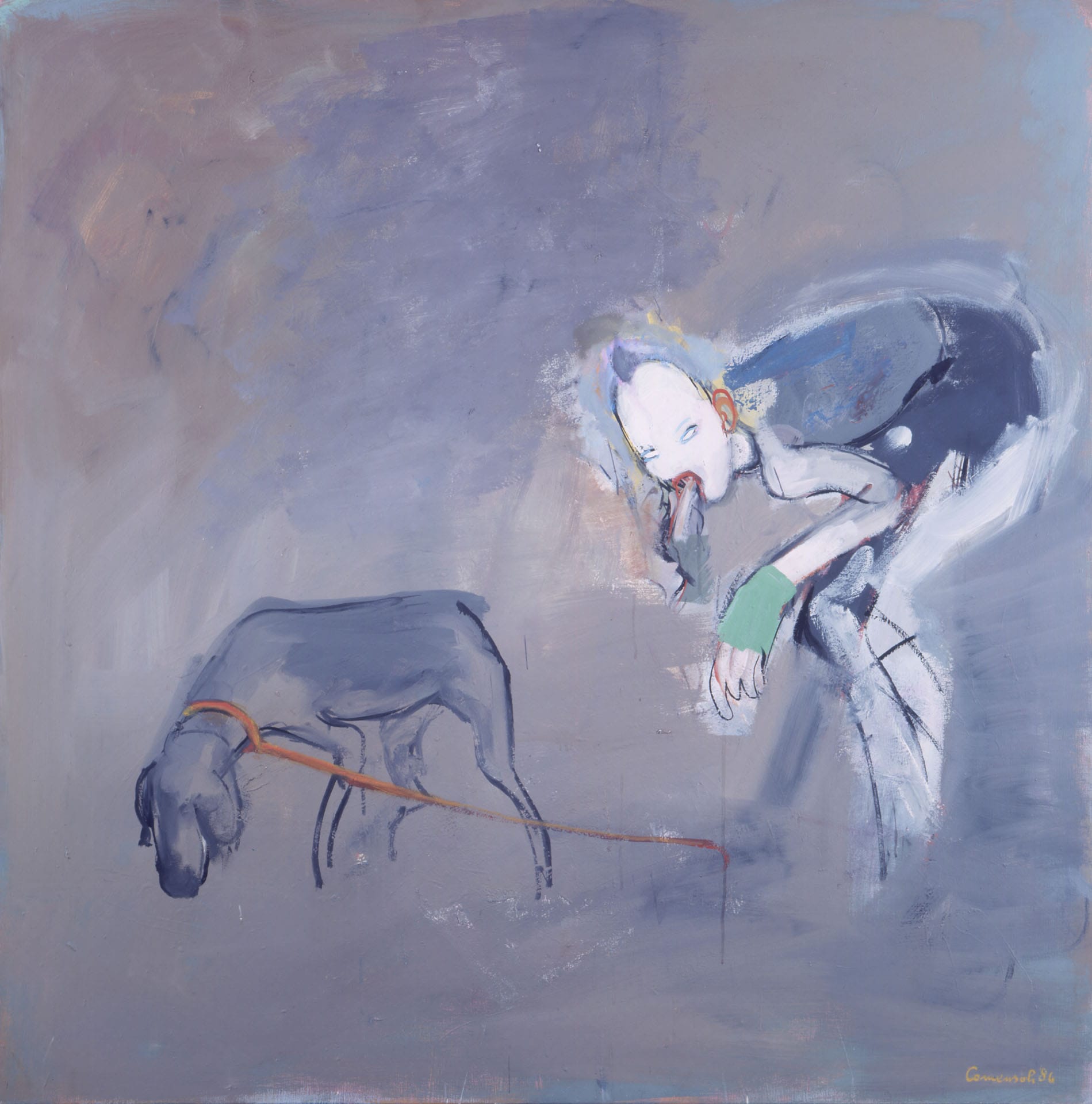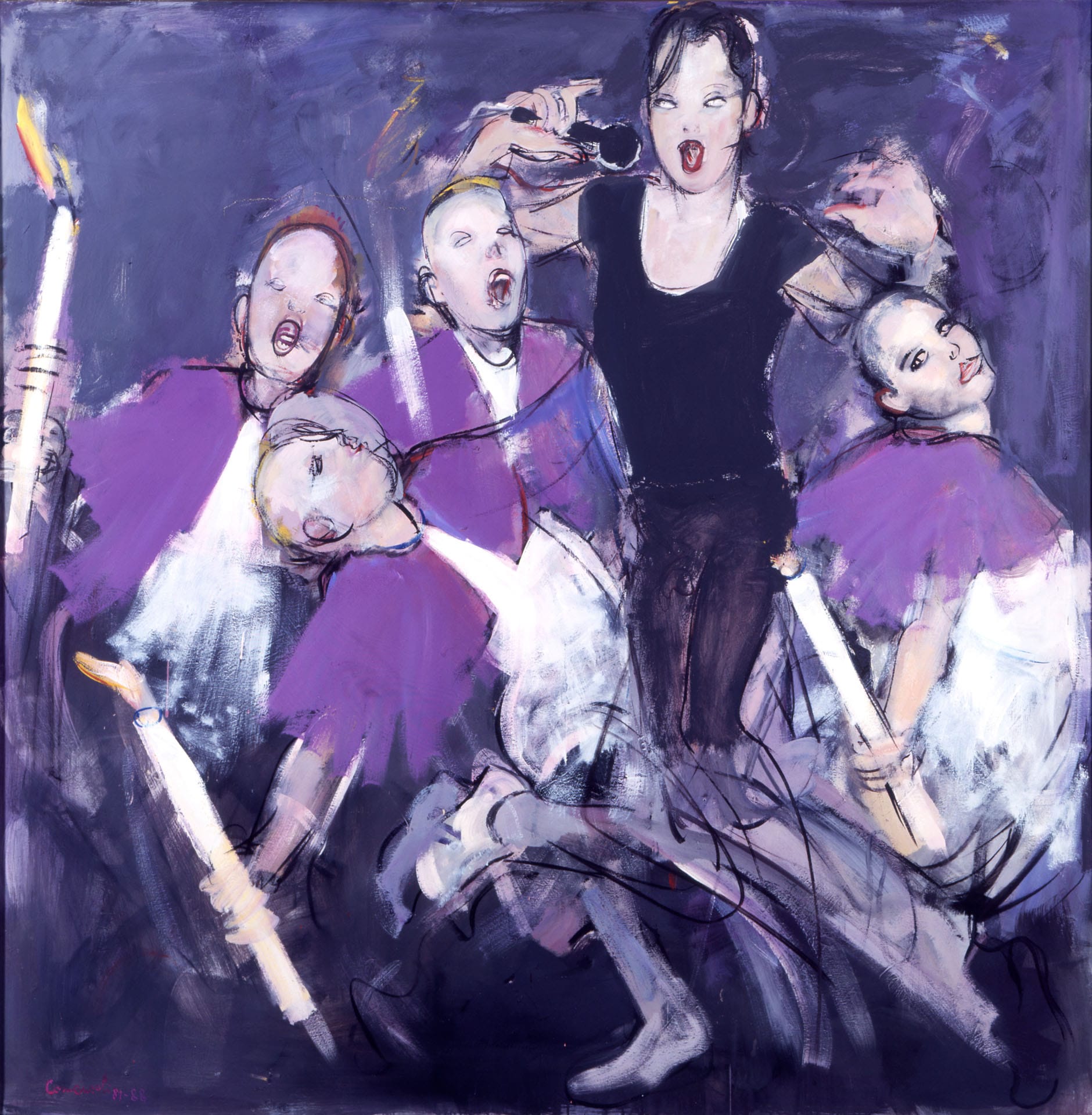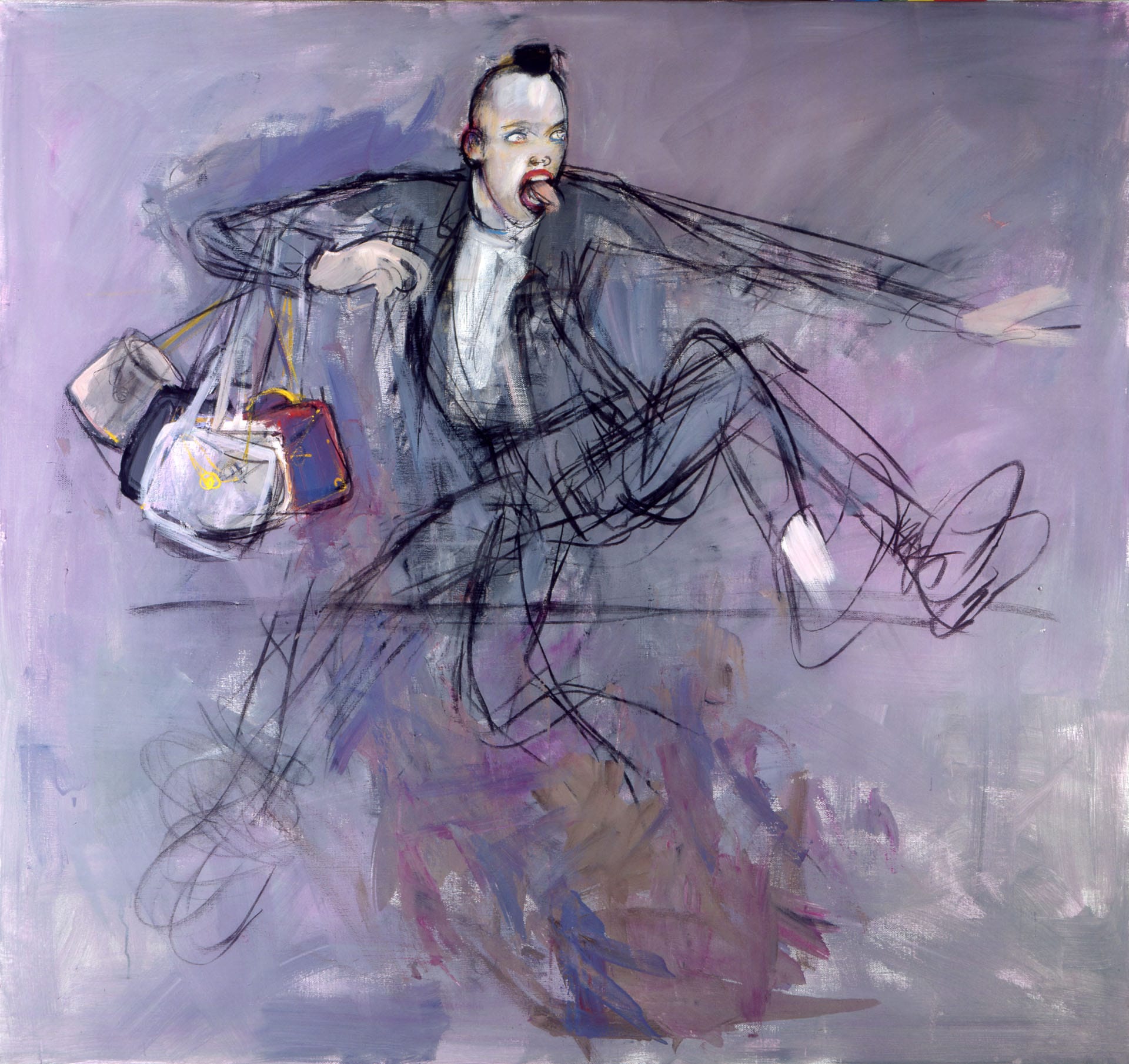1953 is the breakthrough year. Comensoli frees himself from the classic Parisians and through the instruments of realism gives life to the original narration of his «workers in blue».
THE WORKERS WORLD
During these years, a massive emigration from Italy is profoundly changing the face of Switzerland. Official statistics that do not take into account the large number of seasonal workers, but determine that in just seven years - between 1965 and 1972 - foreign workers with annual residence permits go from 377,000 to 721,000. Thus, while Swiss painters celebrate the triumph of geometry or take refuge in the limbo of abstract expressionism, Comensoli discovers the "new aesthetic" of immigrant workers, representing them with an intense interest that can only be explained by going back to the roots of his existence, to the years of his difficult childhood. "They changed our reality, questioned our customs, provoked us. The whole of society”, says Comensoli in an interview with journalist Frank A. Meyer - he had to suddenly confront the lives of these men who unexpectedly appeared on the construction sites, in the restaurants, in the stations. “They bewitched our daily lives. For me they were the new aesthetics. I couldn't avoid them, I had to paint them. In the paintings they turned themselves into poetry.”
Carlo Levi, the author of "Cristo si é fermato a Eboli", is impressed by Comensoli's pictorial narrative and invites him to Rome and to the San Luca gallery for an exhibition where Comensoli clashes with the master of Italian realism, Renato Guttuso: the reason? Guttuso reproaches the Swiss painter for his modest, poorly elegiac tone, for the melancholy everyday life of the protagonists, that is, those who should represent the "sun of the future". According to Levi, however, "Comensoli tells us in a simple and austere way the fate of his characters. The tone is fraternal, the point of view is that of those who live and feel on the same level and seek not curiosity but a similarity."
Mario Comensoli also paints his father Albino, ill for some time and dies in hospital at the age of 82. The mattress maker had addressed many postcards to his son expressing pride for his work as an artist.





